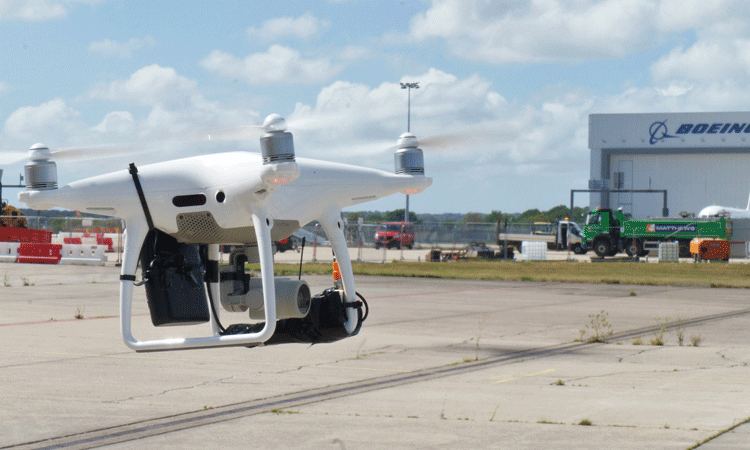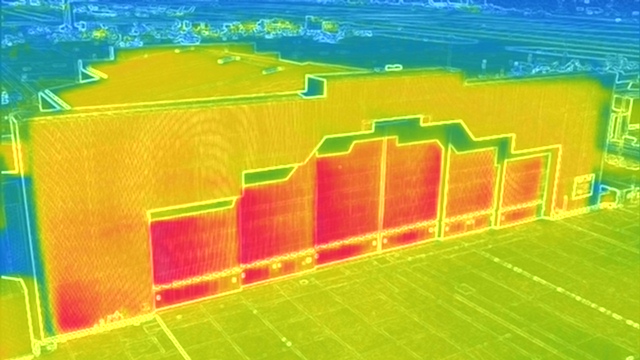Integrating drones into airspace
- Like
- Digg
- Del
- Tumblr
- VKontakte
- Buffer
- Love This
- Odnoklassniki
- Meneame
- Blogger
- Amazon
- Yahoo Mail
- Gmail
- AOL
- Newsvine
- HackerNews
- Evernote
- MySpace
- Mail.ru
- Viadeo
- Line
- Comments
- Yummly
- SMS
- Viber
- Telegram
- Subscribe
- Skype
- Facebook Messenger
- Kakao
- LiveJournal
- Yammer
- Edgar
- Fintel
- Mix
- Instapaper
- Copy Link
Posted: 7 February 2022 | Damon Knight | No comments yet
Damon Knight, Head of Safety, Security and Quality at Air Navigation Solutions, writes of the complexities of safely integrating drones into our airspace, and details how a flexible, dynamic approach could be key to realising the potential benefits of these unnamed aircraft.


Credit: ANSL
When drones began to be used more widely by the public, initially the aviation industry’s assessment classed them as a threat, posing a risk to aircraft and potentially infrastructure and passengers as well. In reaction, airports focused on attempts to detect, protect, and defend against them. This feeling was fuelled by increasing cases of drones straying into protected airspace and culminated in a surge in drone-defence activities for airports following the Gatwick drone incident in December 2018.
However, in the three years since, the value that drones can offer has been increasingly recognised by the industry. Drones are now used by businesses to deliver small items to customers, by emergency services in life-saving scenarios to search for injured people in remote locations, and by airports to inspect buildings.
In 2021, ANSL carried out its own drone flight trials at Gatwick Airport (LGW). It used its integrated Drone Operations on Airports concept to prove the feasibility of structural inspections, thermal inspections to identify sources of heat leaks on airport facilities, and lighting inspections, to name just a few.


Credit: ANSL
Today, the drone industry continues to grow at an increasingly fast pace; in January 2021, there were 1,782,479 drones registered in the U.S. alone. It is therefore inevitable that they will remain a part of our future and our airspace. With this in mind, airports and other key stakeholders are turning their attention away from prevention to focus on safe integration into the airfield and beyond.
Today, the drone industry continues to grow at an increasingly fast pace; in January 2021, there were 1,782,479 drones registered in the U.S. alone”
Whilst on-airport operations of drones require integration from an airport traffic and infrastructure perspective, inevitably any drone flying on, and above, airports would be utilising the associated airspace as well. Potential future use-cases, such as transport of spare parts, delivery of priority items and the deployment of cargo drones and air taxis, quickly lead to the challenge of on- and off-airport transition.
At this point, the focus shifts and the wider challenge of airspace integration becomes more pressing. In comparison to airports which generally are well known, comprehensively surveyed and tightly controlled spaces, the wider airspace introduces the challenge of the unknown.
When considering the integration of drones into airspace, it is the uncontrolled airspace, the remote areas and the less occupied parts that may require the most attention. How can drones be integrated into rescue helicopter traffic that is responding to ad-hoc requirements in remote locations not covered by today’s surveillance solutions? How can drones safely co-exist with general aviation operating at their leisure with no flight plan without posing a risk or leading to constraint? These are the questions that need answering and, together with concepts for the integration into high-intensity environments such as airports, will provide a solid concept for scalable, safe, and efficient integration of drones into the future of air travel.
It’s imperative that there is a high level of visibility and awareness when integrating drones, ensuring that all parties are aligned and maintain situational awareness and clear communications in relation to all future airspace users. Attempting to achieve this by mandating equipment, however, appears inefficient and one could argue unfair. A flexible, dynamic approach could be the solution which allows for adaptation based on circumstances.
With a high level of visibility and in areas – or, to introduce another element of flexibility, in times – with comprehensive surveillance of all airspace users, could different rules apply at times of less complete surveillance? Could the same airspace be managed differently when it is used by few aircraft only versus when demand is high?
It’s imperative that there is a high level of visibility and awareness when integrating drones. A flexible, dynamic approach could be the solution which allows for adaptation based on circumstances”
Naturally each stakeholder in the airspace will have varying perspectives and priorities. It’s crucial that we translate between all stakeholders so that everyone can understand the suitability and benefits of such flexible integration of drones into airspace and ensure that everyone can follow the robust procedures needed to ensure a safe operating environment. This should happen in close collaboration with the regulator but may require us to drive and define regulations in line with our objectives and in the best interests of our industry.
Making the transition into an integrated and dynamic airspace as proposed for both manned and unmanned aircraft will, of course, lead to change for all stakeholders, and with change often comes concern. How will this work and who will be responsible for managing this? What will this mean for me as an airspace user? Will this change the job description for Air Traffic Control Officers, who will now be monitoring the movements of drones near airfields and beyond? The solution to these issues is to approach the integration of drones as a large and fundamental change programme and to engage, inform and involve all stakeholders throughout. What specifically this could mean for any one of us in an airport environment will also need to be assessed on a case-by-case basis, depending on the need for each airfield and the wider use of drones in the area. However, this should be seen as an opportunity to shape the future of our industry and, if managed appropriately, will allow us to deliver an incredibly exciting and promising new chapter of air travel.
Biography


Related topics
Air traffic control/management (ATC/ATM), Aircraft, Airside operations, Drones, Safety


















